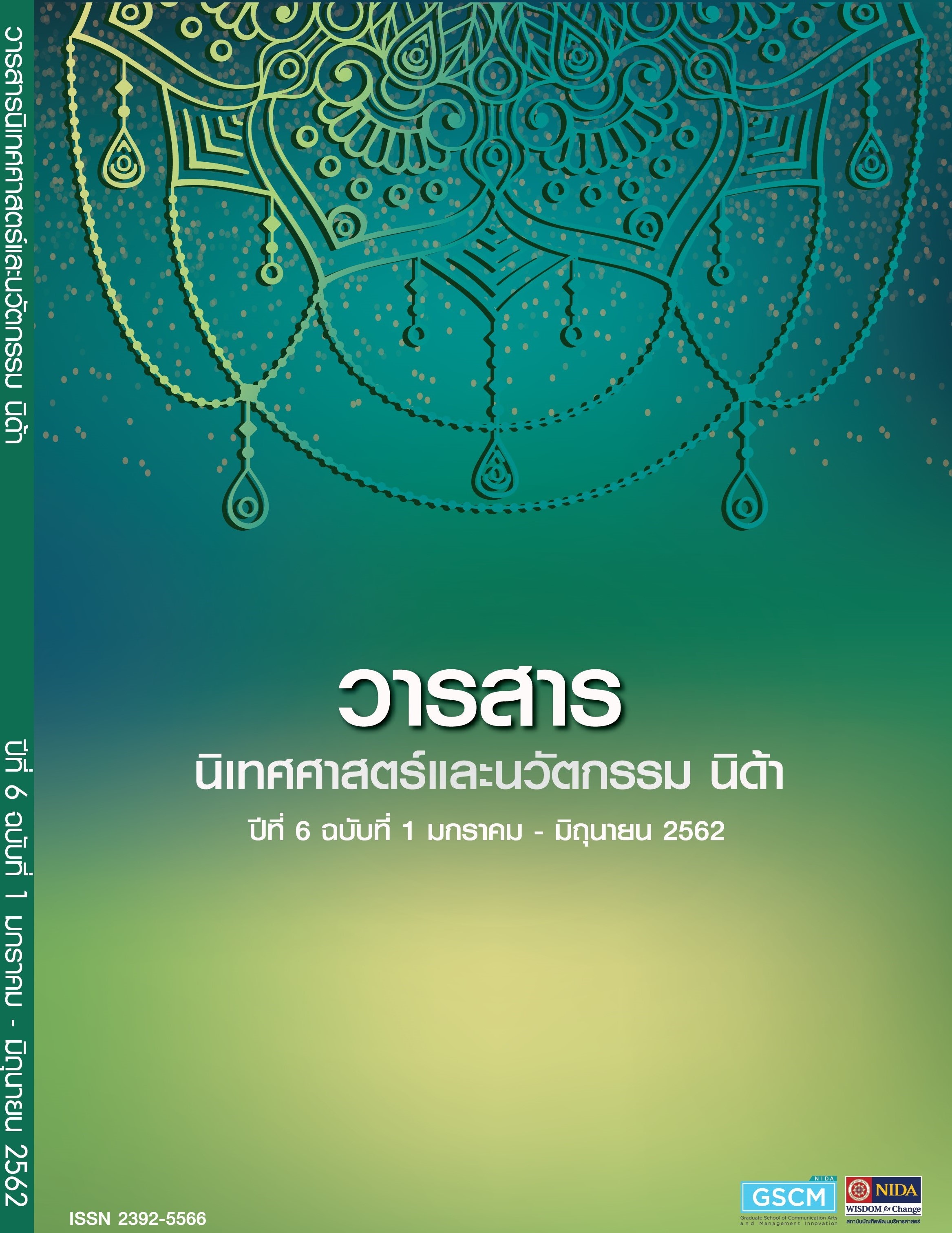Predicting Factors On Generation Y’s Risk and Behavioral Usage of Online Social Media with Media Literacy and Safety on Cyber Space
Main Article Content
Abstract
The main objective of this research is to study about Generation Y’s social media behavioral factor and media literacy together with the correlation factor of social media usage and risk behavioral. This research consisted of two main assumptions started with the factors of social media behavioral, risk behavioral and media literacy that correlate with cyber security and the factors of social media behavioral with media literacy correlate with risk behavioral. This is quantitative research using purposive sampling with sample group of Generation Y required to use social media every day. The finding indicates that most respondents are female aged between 20-25 years with the behavioral of liking to post, check and share personal information on social media. The finding also shown that Generation Y will play social media mostly after work till night time in between 19:00 – 23-59. For correlation factors, all variables are positively correlated with statistically significant at 0.001. For predicting factors, they are only two factors of social media behavioral and media literacy that can only be used to predict the safety factor of cyber security.
Article Details
ข้อความและความเห็นในวารสารนิเทศศาสตร์และนวัตกรรม นิด้า เป็นของผู้เขียนแต่ละท่าน มิใช่ของคณะนิเทศศาสตร์และนวัตกรรมการจัดการ สถาบันบัณฑิตพัฒนบริหารศาสตร์
References
แสงเดือน ผ่องพุฒ. (2556, ตุลาคม). สื่อสังคมออนไลน์: แนวทางการนำมาประยุกต์ใช้. สำนักวิชาการ สำนักงานเลขาธิการวุฒิสภา, 3(20), 1-3.
ชลธิชา ใจพนัส, อรอุมา เจริญสุข, และวิไลลักษณ์ ลังกา. (2556). ปัจจัยบางประการที่ส่งผลต่อความสามารถในการแก้โจทย์ปัญหาคณิตศาสตร์ของนักเรียนชั้นมัธยมศึกษาปีที่ 1 โรงเรียนสาธิตมหาวิทยาลัยศรีนครินทรวิโรฒ. วารสารวิชาการ Veridian E Journal, 6(3), 286-304
ฐานเศรษฐกิจ. (2560, 24 พฤศจิกายน). ประชากรไทย Gen Y ใหญ่สุด พฤติกรรมสร้างโอกาส-ความเสี่ยง (1) [เว็บไซต์]. สืบค้นจาก https://www.thansettakij.com/content/234315
ดร.พสุ เดชะรินทร์. (2560, 13 มิถุนายน). พฤติกรรมของคนกับสื่อสังคมออนไลน์ [บล็อก]. สืบค้นจาก https://www.bangkokbiznews.com/blog/detail/641565
ประวิทย์ ลี่สถาพรวงศา. (2559). เตรียมการอย่างไรเพื่อรับมือ Internet of Things (IoT). วารสารวิชาการ กสทช, 2560 (ฉบับพิเศษ), หน้า 26-32.
ปวีณา ลีลาชัย, พลาญ จันทรจตุรภัทร, และอารีรัตน์ ปานศุภวัชร. (2557). ความสัมพันธ์ระหว่างระบบการจัดการที่ดีกับผลการดำเนินงานของธุรกิจห้องเช่าและหอพักในจังหวัดสารคาม. วารสารการบัญชีและการจัดการมหาวิทยาลัยสารคาม, 6(4), 108-118.
พ.อ.ดร. เศรษฐพงค์ มะลิสุวรรณ. (2559, 13 สิงหาคม. เทคโนโลยีเปลี่ยนโลก (Disruptive Technology) [บทความออนไลน์]. สืบค้นจาก https://www.it24hrs.com/2016/disruptive-technologies-technology/
ระบบสถิติทางการทะเบียนของกรมการปกครอง. (2560). สถิติประชากรและบ้าน-จำนวประชากร แยกอายุ เดือน ธันวาคม พ.ศ. 2560. สืบค้นจาก https://stat.dopa.go.th/stat/statnew/upstat_age.php
สพธอ. (2560, 5 ตุลาคม). รู้ใจ Gen ใช้เน็ตอย่างไร เพื่อขายให้โดนใจ [เว็บไซต์]. สืบค้นจาก https://www.etda.or.th/content/internet-use-categorized-by-generation.html
อุราเพ็ญ ยิ้มประเสริฐ, นพมาศ ปลัดกอง, และอังคณา ศิริอำพันธ์กุล. (2559). การรู้เท่าทันสื่อ: ประโยชน์และการนำไปใช้ กรณีศึกษา สถาบันอุดมศึกษาเอกชนแห่งหนึ่ง. วารสารปัญญาภิวัฒน์, 8(2), 183-195.


